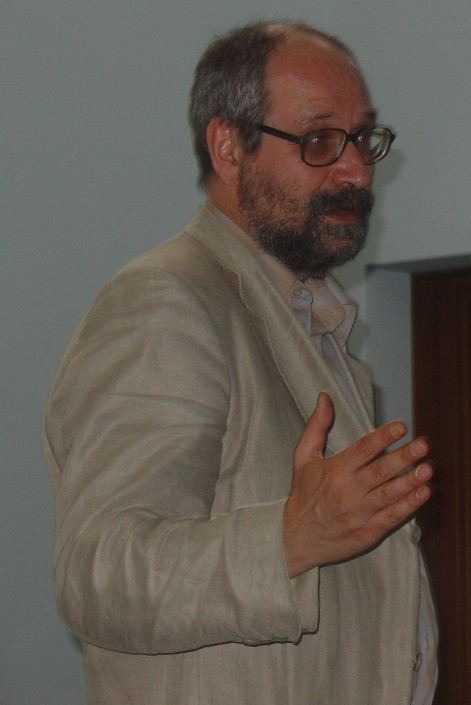Name Sergei Starostin Role Author | ||
 | ||
Main interests long-range language reconstruction (especially Nostratic and Dene–Caucasian), glottochronology, accentology (especially Indo-European) Notable ideas Dene–Caucasian hypothesis, reconstruction of Proto-Altaic, Proto-North-Caucasian, Proto-Yeniseian, Proto-Tibeto-Burman, Proto-Kiranti, reconstruction of Old Chinese and Proto-Japanese, advancement of "recalibrated glottochronology" Died September 30, 2005, Moscow, Russia Books Etymological Dictionary of the Altaic Languages, Hurro-Urartian as an Eastern Caucasian Language Influenced by | ||
Education Moscow State University | ||
Sergey Starostin's Vocal Family (Russia). Viljandi 2011
Sergei Anatolyevich Starostin (Cyrillic: Серге́й Анато́льевич Ста́ростин, March 24, 1953 – September 30, 2005) was a Russian historical linguist, perhaps best known for his reconstructions of hypothetical proto-languages, including his work on the controversial Altaic theory, the formulation of the Dené–Caucasian hypothesis, and the proposal of a Borean language of still earlier date. He was also the author of a widely respected reconstruction of Old Chinese.
Contents
- Sergey Starostins Vocal Family Russia Viljandi 2011
- official video
- Theories
- Evolution of Human Languages project
- Selected works by Sergei A Starostin
- References
Сергей Старостин - Пока молод был official video
Theories
In 1986, Starostin and Igor M. Diakonoff suggested that the Hurro-Urartian languages belong to the Northeast Caucasian language family. Starostin was also instrumental in the reconstruction of Proto-Kiranti, Proto-Tibeto-Burman, Proto-Yeniseian, Proto-North-Caucasian, and Proto-Altaic. He developed the theory, originated by Abu al-Ghazi Bahadur Khan in the 17th century, but really revived by Gustaf John Ramstedt in the early 20th century, that Japanese is an Altaic language.
The Dené–Caucasian hypothesis proposes that Northwest Caucasian, Northeast Caucasian, Yeniseian, Sino-Tibetan, and Na-Dené form a single, higher-order language family. According to Starostin, the Dené–Caucasian and Austric macrofamilies, together with the Nostratic macrofamily (as envisaged by Vladislav Illich-Svitych, with some modifications), can further be linked at an earlier stage, which Starostin called the Borean (i.e. 'Northern') languages.
Evolution of Human Languages project
Since 1985, Starostin had been developing STARLING a linguist's workplace software. He was assisted in his work by Murray Gell-Mann, a Nobel Prize-winning physicist. At the time of his death, he was a professor at the Russian State University for the Humanities, a visiting professor at the Santa Fe Institute, and a frequent guest lecturer at Leiden University in the Netherlands, where he was awarded the degree of Doctor honoris causa in June 2005.
Starostin died of a heart attack on September 30, 2005 in Moscow. His son, Georgiy Starostin, is also a linguist.
